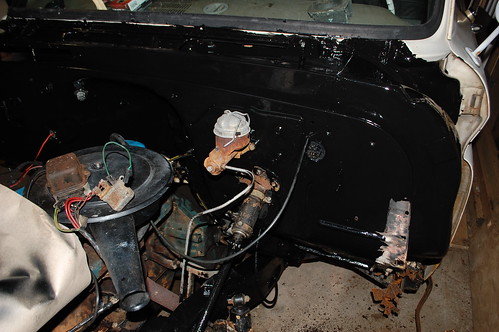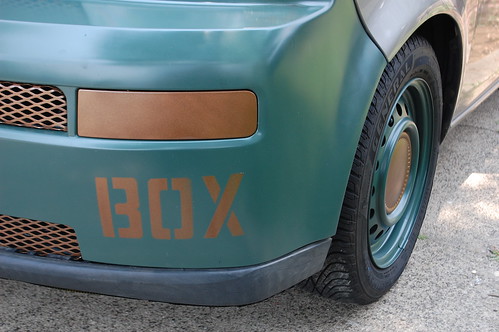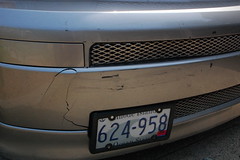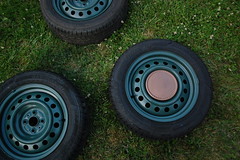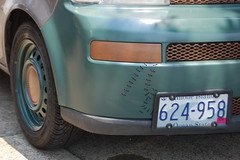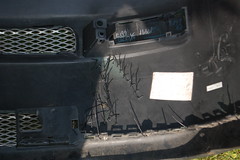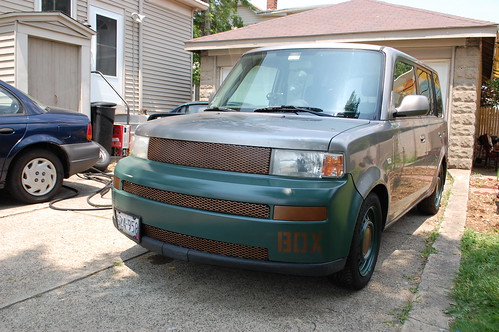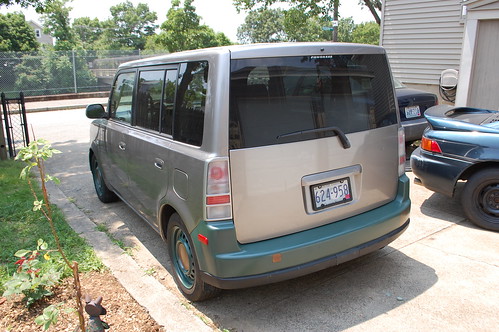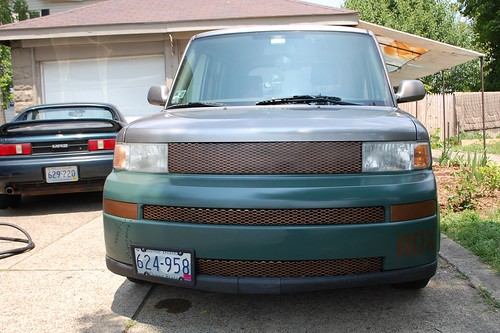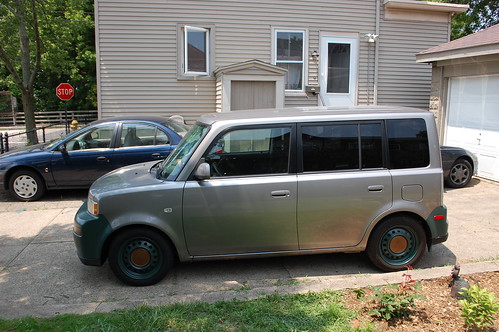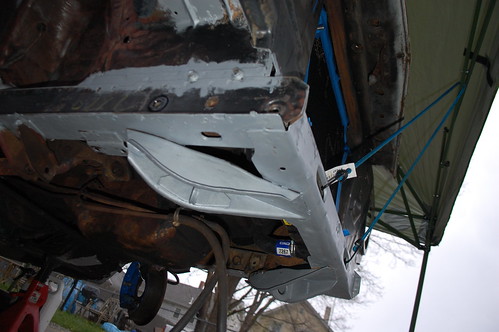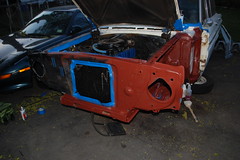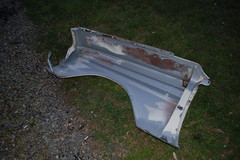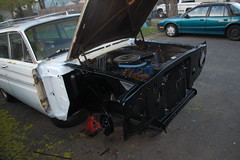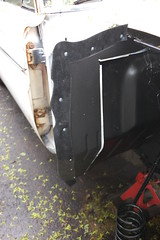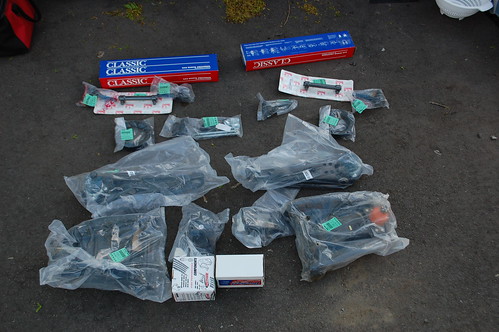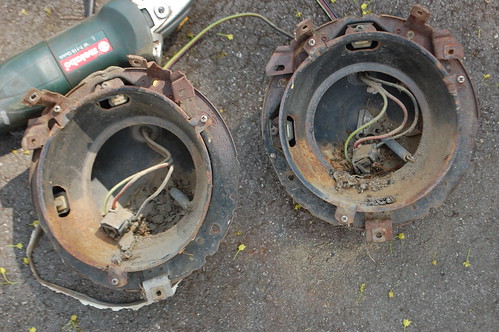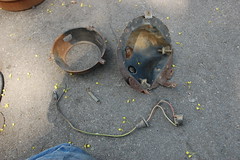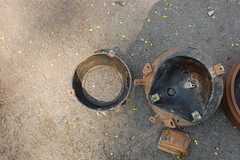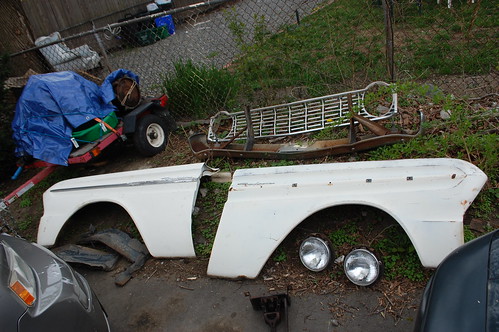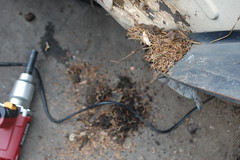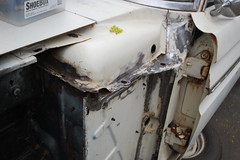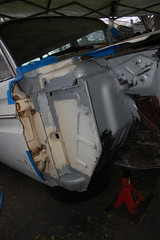Despite being in very good shape for their age, the GMC grille from the swap meet and the grille support panel from Arizona were both still going to need work.
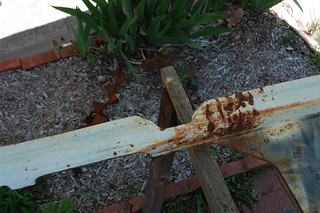 The first order of business was to unbolt everything from them and get to work grinding all the paint off. The grille panel has this odd spot of rust. Which, given its location, was probably the result of battery acid from a battery leaking or exploding, fortunately it was only surface deep and came right off.
The first order of business was to unbolt everything from them and get to work grinding all the paint off. The grille panel has this odd spot of rust. Which, given its location, was probably the result of battery acid from a battery leaking or exploding, fortunately it was only surface deep and came right off.
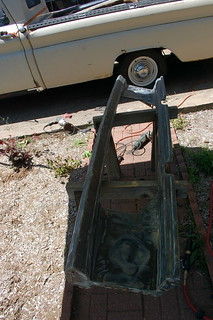
A few hours work gave me a shiny and largely rust-free grille panel. There was no rot, but there will be a lot of little dents & dings to fix.
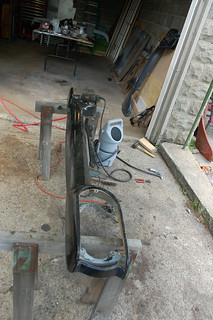
The grille was stripped of its little headlight trim & headlight buckets. These will be rebuilt & painted before going back on the grille.
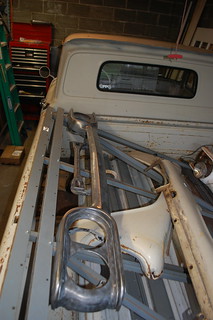
Then the grille was similarly ground clean. I found one old dent that will need a skim of filler to be smooth, but there were no nasty surprises hiding under the paint.
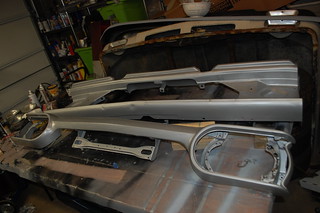
Both were given two coats of MasterSeries anti-rust paint.
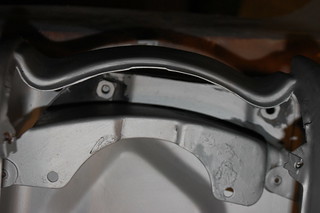
One surprise I did run into was that despite having come with a GMC grille on it, the Grille panel from AZ was actually for a Chevy, which meant two of the mounting hole per side were in the wrong place.
 Fortunately this turned out to be an easy fix, the brace on the back had a cutout where the GMC grille hole was supposed to be, so I just had to drill them out and I had the correct holes needed to let the GMC grille bolt up.
Fortunately this turned out to be an easy fix, the brace on the back had a cutout where the GMC grille hole was supposed to be, so I just had to drill them out and I had the correct holes needed to let the GMC grille bolt up.
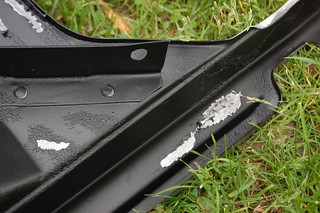 I painted the backs of both with Rustoleum, then sprayed the back of the grille panel with truck bed liner. I think it was because I didn’t dust the parts with primer when the MasterSeries was still wet, but when the bedliner went on it crinkled and lifted most of the Rustoleum off the back of the grille panel.
I painted the backs of both with Rustoleum, then sprayed the back of the grille panel with truck bed liner. I think it was because I didn’t dust the parts with primer when the MasterSeries was still wet, but when the bedliner went on it crinkled and lifted most of the Rustoleum off the back of the grille panel.
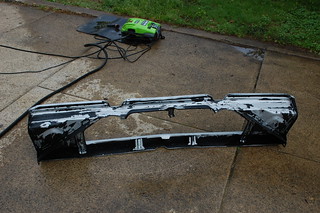
I power-washed it the next day and was left with the result at the right. I’m going to need to sand this down to get any other unattached paint off, then re-prime & paint this again. Not a huge setback, but very annoying.


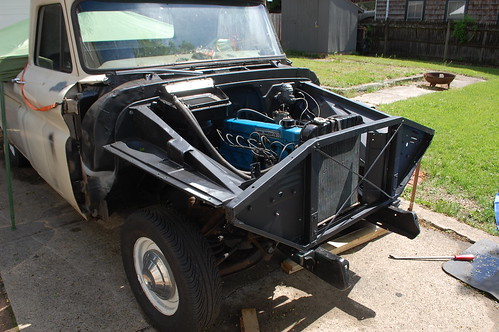
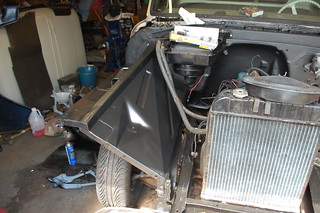

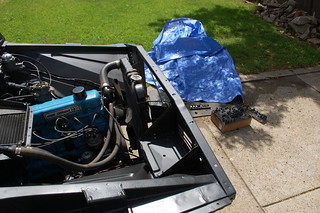

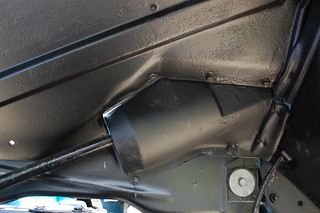

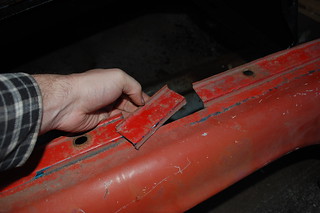 But first I needed to patch the other section that you can see cut out above. There is 3 bends here that needs to be carefully made so everything lines up. I got a brain wave and measured the lip at the top of a junk fender I had. Everything appeared to match so I cut out a section.
But first I needed to patch the other section that you can see cut out above. There is 3 bends here that needs to be carefully made so everything lines up. I got a brain wave and measured the lip at the top of a junk fender I had. Everything appeared to match so I cut out a section. 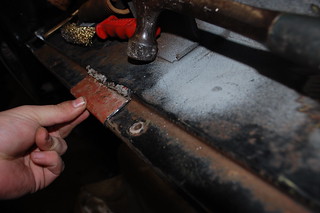 I flipped the piece over and tested it, the bends are an exact match. I carefully trimmed it and the fender edge to fit and tacked it into place.
I flipped the piece over and tested it, the bends are an exact match. I carefully trimmed it and the fender edge to fit and tacked it into place. 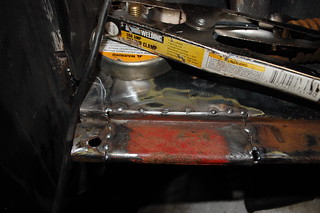 Here it is tacked in place, please ignore the terrible welds from forgetting to turn on the shielding gas on the MIG. Below is the piece with the welding finished & ground down.
Here it is tacked in place, please ignore the terrible welds from forgetting to turn on the shielding gas on the MIG. Below is the piece with the welding finished & ground down. 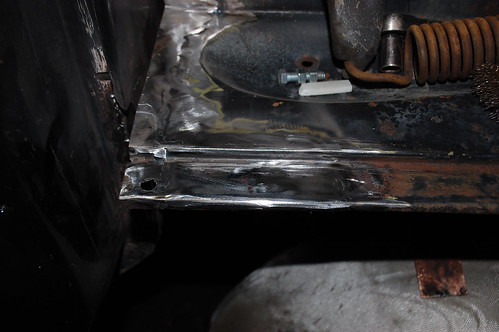
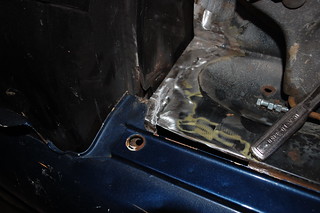

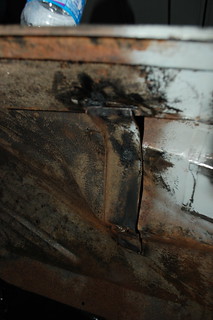
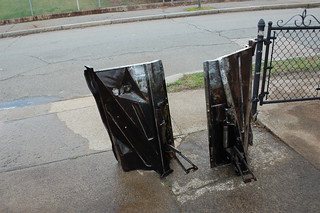
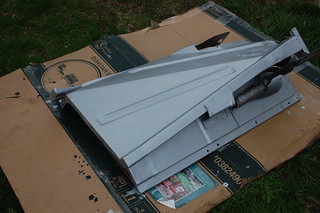
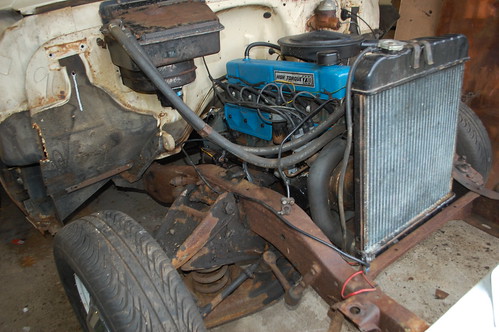
 I decided I was tired of welding, so I worked on something else for a change. I decided to paint the now exposed parts of the frame & firewall. Normally the firewall should be matched to the body color on these trucks, but since I am not sure what shade of dark green I ‘ll be using I decided to paint the firewall to match the rest of the sheetmetal in the engine compartment so I didn’t have to worry about it matching the outside.
I decided I was tired of welding, so I worked on something else for a change. I decided to paint the now exposed parts of the frame & firewall. Normally the firewall should be matched to the body color on these trucks, but since I am not sure what shade of dark green I ‘ll be using I decided to paint the firewall to match the rest of the sheetmetal in the engine compartment so I didn’t have to worry about it matching the outside.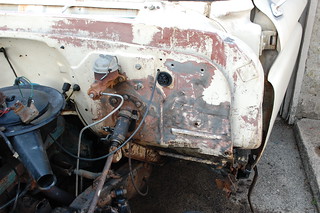
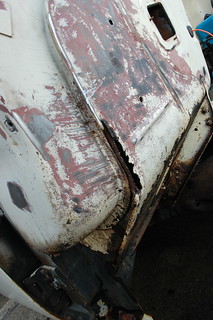

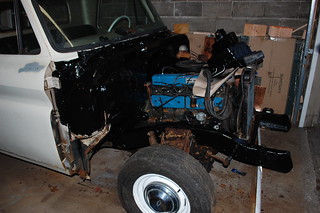 And here is the frame & firewall freshly painted gloss black. I used tractor paint as it is supposed to have good durability. The frame came out great. However despite looking good in pictures, the firewall has a lot of runs & brush marks. I let it dry for a few days anyway, and decided to cover it in textured truck bedliner to hide the flaws.
And here is the frame & firewall freshly painted gloss black. I used tractor paint as it is supposed to have good durability. The frame came out great. However despite looking good in pictures, the firewall has a lot of runs & brush marks. I let it dry for a few days anyway, and decided to cover it in textured truck bedliner to hide the flaws.